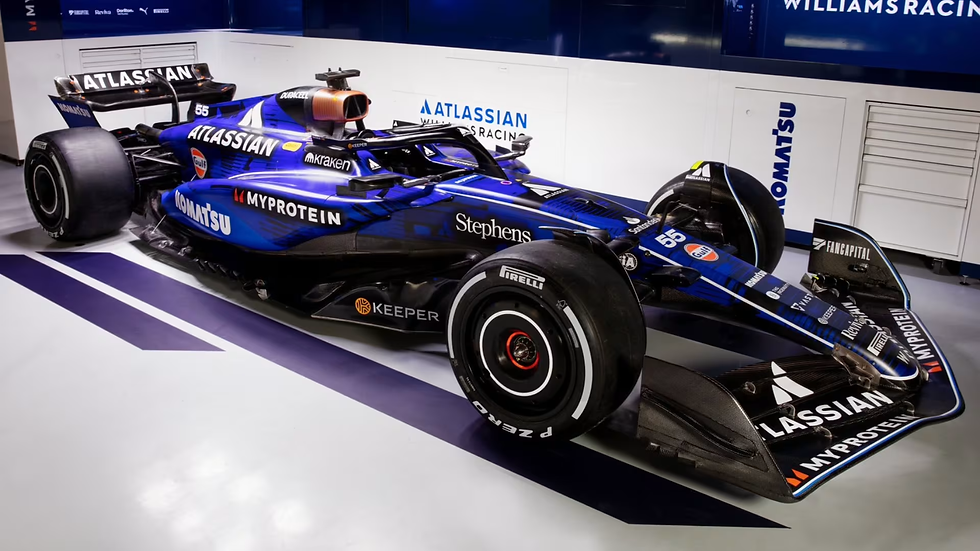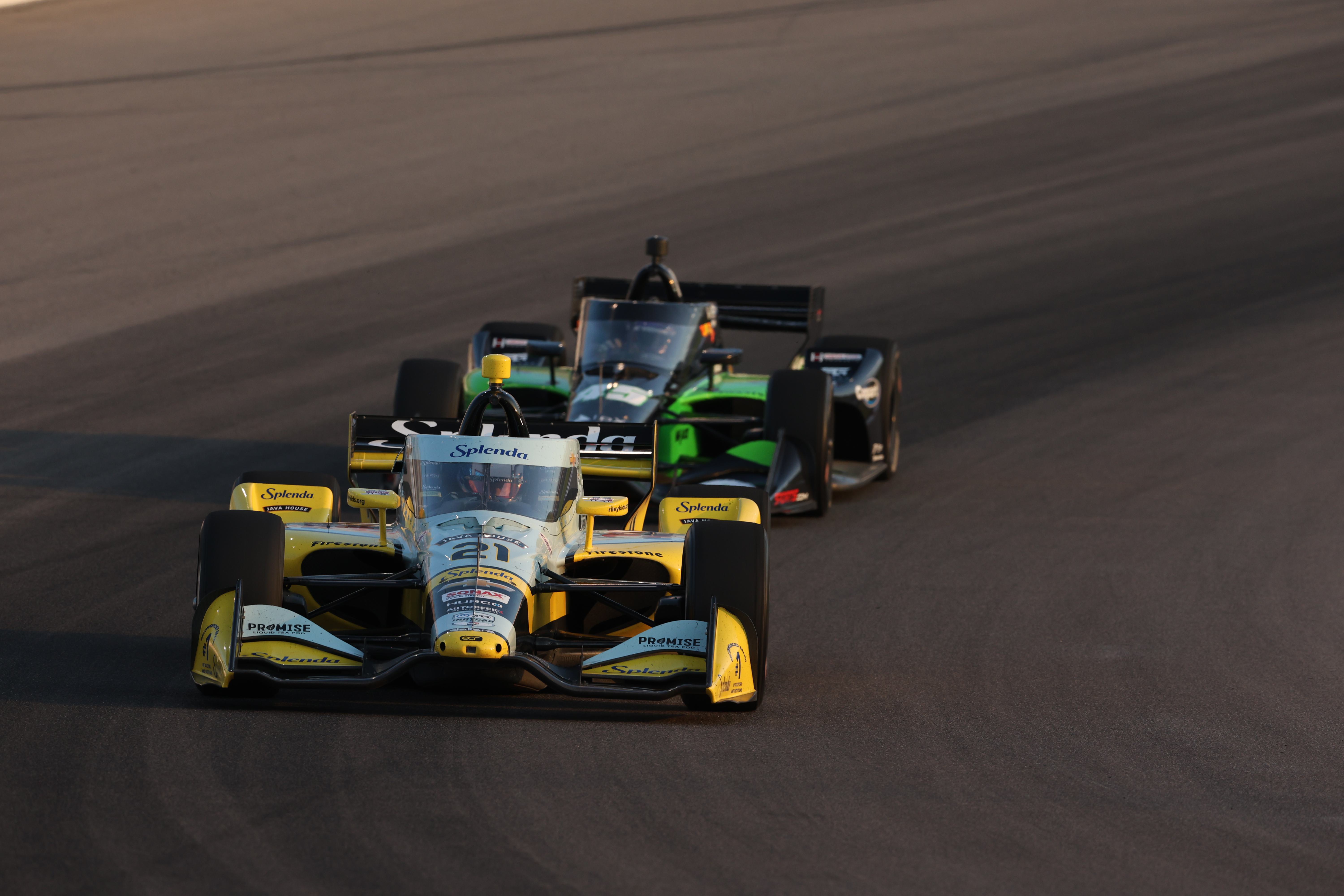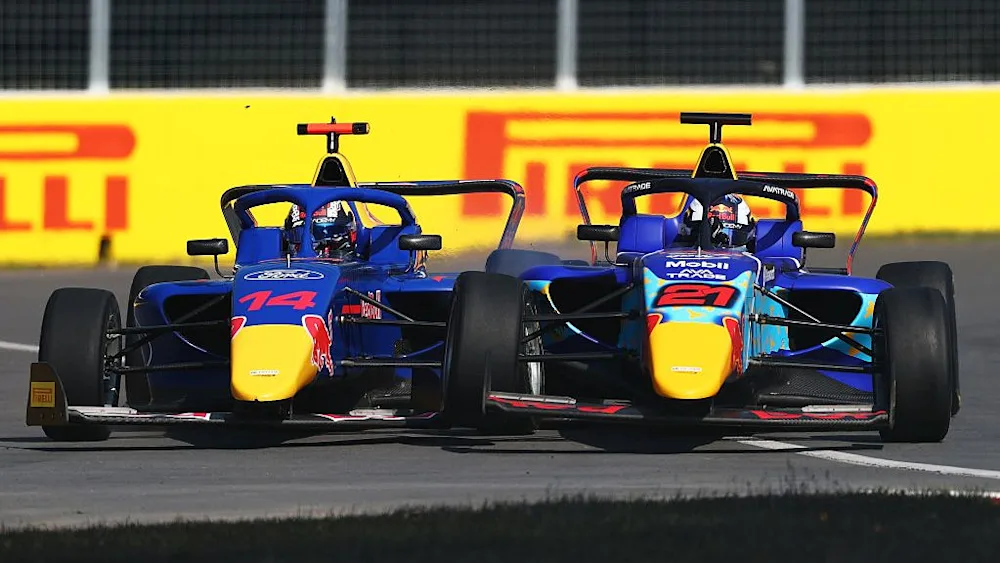Williams mid-season review: From survival to stability
- Kavi Khandelwal

- Aug 23
- 5 min read
Written by Kavi Khandelwal, Edited by Meghana Sree
As we head into the second half of the 2025 Formula One season after a lengthy summer break, our F1 writers take you through the state of play with each team on the grid.

For a team built on silver cups and stubborn hope, 2025 has been a season of blue sparks for Williams: not fireworks, but steady light. They arrived this year not with a miracle but with margins, every tenth chiselled into points.
Their strategic and measured approach has lifted the team from the back-markers and has re-established Williams as a legitimate mid-field contender.
The first half of the season was defined by a focused, data-driven effort to rebuild from the ground up, led by Team Principal James Vowles to deliver tangible results on track.
![2025 Driver lineup of Alex Albon [left] and Carlos Sainz Jr. [right] | Credit: Formula One](https://static.wixstatic.com/media/e1d64c_17758d2fa35e4f83946f7d6eca043748~mv2.png/v1/fill/w_980,h_552,al_c,q_90,usm_0.66_1.00_0.01,enc_avif,quality_auto/e1d64c_17758d2fa35e4f83946f7d6eca043748~mv2.png)
This mid-season checkpoint reveals a clear picture of the team’s resurgence. Their driver lineup of Alex Albon and Carlos Sainz Jr. brings a powerful blend of proven consistency and championship-caliber experience to the garage, propelling the team to fifth in the Constructors’ Championship with 70 points.
The improvement over the last season is striking. In 2024, Williams managed just four points in the first half of the season. Now they enjoy an 18-point cushion over sixth-placed Aston Martin, highlighting the magnitude of this leap forward.
The team’s elevated position reflects the development of the FW47, which features a lighter, more refined chassis that has raised their operational ceiling. However, persistent reliability issues and vulnerability on certain track types reveal limitations the team must address before graduating to the next competitive tier.
High point

Williams’ 2025 campaign has been powered by exceptional driver performances and a series of fundamental yet critical technical advances in the FW47 chassis. This combination has proven a formidable recipe for mid-field resurgence.
Albon has consistently capitalised on track opportunities, demonstrating impressive racecraft. He currently sits eighth in the Drivers’ Championship with 54 points and has secured nine top 10 finishes. His standout performances include a P5 finish at the Australian Grand Prix and a defensive masterclass at Spa, converting a challenging race into a P6 result.
Albon’s consistent brilliance and ability to extract maximum performance from the car under challenging circumstances proved crucial in securing the points that defined the team’s mid-season success.

Sainz has been equally crucial to the team’s upward trajectory. While adapting to the FW47's unique characteristics and the Mercedes power unit has proven challenging, his impact remains undeniable.
The Spanish driver’s pace speaks for itself. He delivered Williams’ strongest sprint qualifying result with P6 at the Belgian Grand Prix and battled wheel-to-wheel with Lewis Hamilton during the Bahrain Grand Prix for P8, showcasing his racecraft under intense pressure.
The FW47 chassis represents a fundamental shift in the team’s engineering philosophy. The key difference from its predecessor, the FW46, starts with weight. The FW47 launched under the 800-kilogram minimum weight limit, which is a stark contrast to the team’s struggles with an overweight car last year.
This wasn’t merely a technical detail but a profound strategic advantage relative to their 2024 campaign. The team now enjoys the flexibility to strategically add ballast and fine-tune weight distribution for optimal performance across different circuits.
The team’s progress reflects the new management’s clear vision. Vowles’ emphasis on operational discipline and a more simulation-based approach to car development has broken the cycle of perpetual struggle.
Low point

A set of persistent challenges has exposed the team’s underlying vulnerabilities. These issues stem from both car design and operational infrastructure, affecting the team’s performance and preventing it from consistently challenging the front-runners.
Their most critical and costly issue has been the ongoing struggle with thermal management.
Vowles has openly admitted that persistent cooling problems have compromised the car’s pace, forcing temporary fixes just to ensure it can finish races. This isn’t a single design flaw, but a symptom of a deeper, systemic problem.
According to Vowles, the team lacks the advanced simulation infrastructure necessary to accurately predict thermal behavior, putting them behind the curve compared to top teams.
This forces the team to rely on on-track learning and manual estimations instead: a reactive approach that has proven expensive in both points and money.

Albon provides a crucial perspective on this long-standing issue, stating that a “fundamental problem in the car’s handling in slow corners has been part of its DNA for a long time”.
His hat-trick of DNFs from the Spanish to the Austrian Grand Prix impacted the team greatly, costing valuable championship points and placing immense pressure on the team’s resources.
Albon’s first DNF in Spain due to a collision with Liam Lawson was followed by a mechanical issue midway through the Canadian Grand Prix, forcing the Thai driver to retire the car.
The third consecutive DNF in Austria was particularly frustrating as it was a similar mechanical issue as the one he faced in Canada.
While progress has been made, clearly demonstrated by Silverstone and Spa’s results, the core weakness persists on a track-by-track basis.
The team’s mid-season narrative has also been largely defined by the adaptation curve of its new driver, Sainz. His performance has been a mixed bag, with his biggest hurdle being the switch from a Ferrari power unit to a Mercedes engine.
He has had to “relearn parts of his driving style” to compensate for the car’s behavior, and pinpointed race execution and communication with the team as areas where he needs to “raise the level”.
Looking ahead

For Williams to maintain its hard-won position and eventually challenge the teams ahead, several key areas need addressing that have exposed its vulnerabilities this season.
Importantly, Williams must find a permanent solution to its thermal management. As Vowles indicated, it’s not a simple fix but an infrastructural challenge.
The team’s slow-speed weakness also needs addressing. The engineering challenge is adding downforce and traction for twisty sectors while preserving the FW47's inherent low-drag strengths.
This demands a focused aerodynamic development path through a new front wing design with more targeted load distribution that can be fine-tuned for circuits like Singapore.
The final races of the season will provide the real litmus test for the team’s strategic decisions. Based on the FW47's performance characteristics, the team should expect strong showings on upcoming low-drag circuits like Monza.
A key strategic decision for the team is its upgrade cadence. Williams is bringing small packages to the FW47 through the run-in while most resources have been reallocated to designing and developing the 2026 car.
This high-stakes play of a stable car with no major upgrades can paradoxically become an advantage, allowing the team to focus on perfecting the car’s setup and refining operational procedures without the constant variable of new components.

Williams is simply joining a paddock-wide strategic convergence. The game is no longer about who can bring the most upgrades but about who can secure the best head start on a new regulatory era.
The team is learning to march down the road toward consistent points and even a possible podium finish should circumstances present them with the opportunity. If 2024 was triage, 2025 is scar tissue knitting: tougher, tidier and finally strong enough to lift the team upward.









Comments